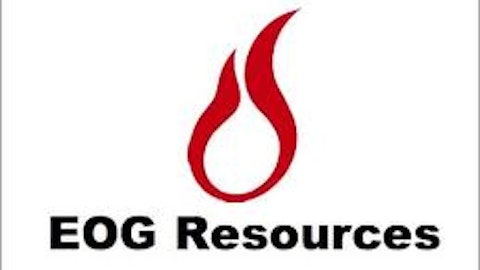
In return, Elliot Management, the second-largest shareholder in Hess, will support Hess Corp. (NYSE:HES)’ five director nominees. Former Royal Dutch Shell plc (ADR) (NYSE:RDS.B) veteran Mark Williams was voted in as the non-executive chairman at the new board’s recent meeting as the company’s founder’s son John Hess prepares to step aside.
This is a huge win for Paul Singer and Elliot Management. The firm now controls more than one-fifth of the board while its total stake, despite the firm being the second-largest shareholder, is just 4.5%.
One of Hess Corp. (NYSE:HES)’ biggest problems was its top management. Except for two of its executives, none of the other directors had any sort of oil and gas experience. But with the overhaul, this problem has finally been addressed.
Earnings
The company’s last earnings release was better than expected as its revenue rose 39% year-over-year to $4.1 billion while income more than doubled to $1.3 billion. Although these massive gains came on the back of asset sales in Azerbaijan and the UK North Sea, on an adjusted basis, excluding the impact of one-off items, Hess Corp. (NYSE:HES) managed to beat the analysts’ bottom-line estimates by $0.36 per share. A big positive was the increase in production in the Bakken region.
In the quarter, hydrocarbon production was 389,000 barrels of oil equivalent per day (boepd), which is down by 2% from the same quarter of 2012. Crude oil production fell in the quarter by 1.4% to 272,000 boepd. Natural-gas output was down by 2.8% to 593,000 cubic feet per day. The company also reduced its capital and exploratory expenditures to $1.6 billion from nearly $2.0 billion in the same quarter last year. The drop in production was largely due to the asset sale and lower output from the Valhall field in the North Sea.
Like Marathon Oil Corporation (NYSE:MRO) and ConocoPhillips (NYSE:COP), Hess Corp. (NYSE:HES) is also aiming to become a pure exploration and production firm and is selling its downstream assets around the world. Besides the ones mentioned earlier, the Eagle Ford shale assets are also being put up for sale. So far this year, Hess has raised $3.4 billion from asset sales.
The bright spot: Bakken Shale
The Bakken Shale, located in North Dakota, is one the largest oil developments in the U.S. The Bakken Shale play has been the main driving force behind the state’s rise as the second-biggest oil producer in the country after Texas.
At Bakken, oil was discovered more than six decades ago but commercial production started 50 years later, about 10 years ago, due to modern drilling methods — such as hydraulic fracturing, or fracking — which made oil extraction economical.
Estimates vary about the size of Bakken’s oil and gas reserves, from the ultra-conservative 4 billion barrels to very-optimistic 400 billion barrels of oil equivalents. But one thing is for sure, Bakken has lots and lots of oil and natural gas.
At Bakken, Hess’ acreage is around 900,000 acres and from here, the company posted an impressive 54.8% increase in production to 65,000 boepd from 42,000 boepd in the same quarter last year. Moreover, the company is improving its efficiency in this region with a 36% improvement in the costs associated with drilling and the operation of wells.
Hess Corp. (NYSE:HES) rival Continental Resources, Inc. (NYSE:CLR) is the largest leaseholder at Bakken, with 1.1 million acres. It has also reported a 61% increase in quarterly production at Bakken from the corresponding period last year to 67,757 boepd, which beats Hess’ numbers. Its annual target is a 30% to 40% increase in output from the region. Overall, its average production has risen by 42% to record levels of 121,500 boepd. Continental Resources, Inc. (NYSE:CLR), without doubt, has one of the best growth rates in the industry and dominates the Bakken region with supply agreements with refiners in both the East and West Coasts as well as the Gulf Coast.



